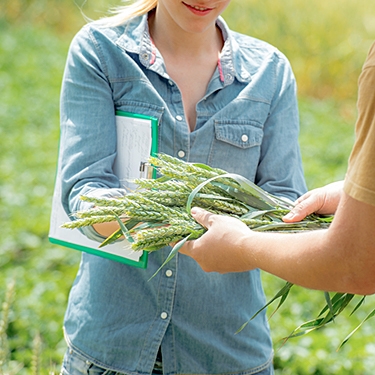Illuminating the value of technical research

On behalf of a commodity producer organization, WPI evaluated the outputs from a project that featured a $5 million investment into technical research over multiple years. WPI’s team captured the results of this extensive effort and synthesized them for presentation to the organization’s governing board; among the findings uncovered and presented for the first time was the development of genomic traits proven, via rigorous testing, to provide crop yield advantages of 50 percent or more to U.S. farmers in times of drought. Capturing measurable results from long-term efforts can be challenging. Educating clients on the dynamics of success measurement when quantifiable results are not readily available requires deep client-consultant collaboration and an ability to consider both near- and long-term client aspirations with market/policy dynamics – attributes that WPI brings to every consulting engagement.
 There was lower volume in the grain pits today, with perhaps some stronger interest in the last few days of holiday shopping. Traders were not buying corn or soybeans for their loved ones today, but maybe a wee bit of HRS, which closed up today and uniquely was higher for the week. There were...
There was lower volume in the grain pits today, with perhaps some stronger interest in the last few days of holiday shopping. Traders were not buying corn or soybeans for their loved ones today, but maybe a wee bit of HRS, which closed up today and uniquely was higher for the week. There were...
 USDA’s monthly Cattle on Feed report was released today. Total cattle on feed amounted to 11.7 million head, 98 percent of last year. Placements were the lowest for the month of November since the series began in 1996, dropping 11 percent on the year due to a tight cattle su...
USDA’s monthly Cattle on Feed report was released today. Total cattle on feed amounted to 11.7 million head, 98 percent of last year. Placements were the lowest for the month of November since the series began in 1996, dropping 11 percent on the year due to a tight cattle su...
 December is upon us and the fall calf run all but ended, the beef industry is finalizing its estimates of 2025 profitability and market performance. For cow-calf producers, the results from all but the last two weeks of the year indicate profits easily hit a record high, even on an inflation-ad...
December is upon us and the fall calf run all but ended, the beef industry is finalizing its estimates of 2025 profitability and market performance. For cow-calf producers, the results from all but the last two weeks of the year indicate profits easily hit a record high, even on an inflation-ad...